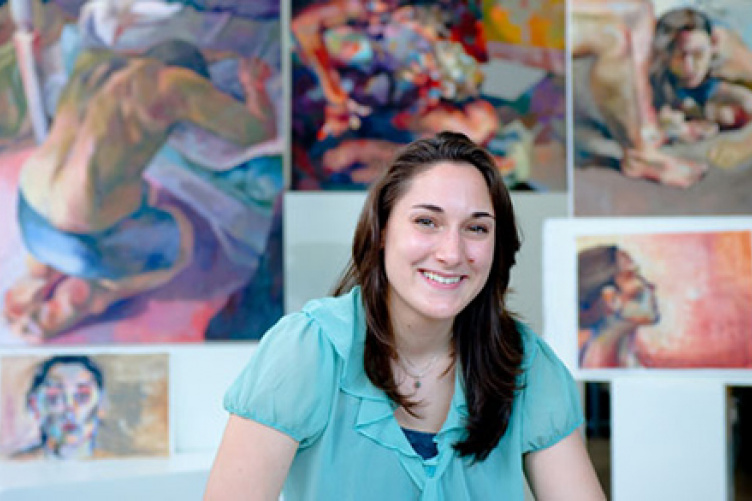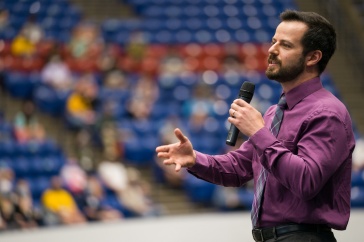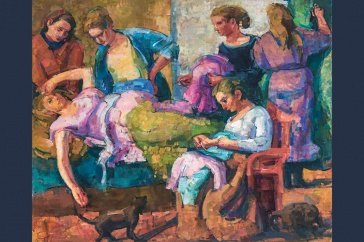
Jennifer Lamontagne
Jennifer Lamontagne ’14, from Deerfield, N.H., is a rare art student who has set herself the challenge of creating a series of oil paintings that “renew Christian art in a contemporary manner, exploring the importance of the human figure and instilling my own Christian faith.”
With the help of her faculty mentor, Suzanne Schierson, Lamontagne successfully applied for a Summer Undergraduate Research Fellowship (SURF) grant, and last summer she was able to devote herself to this project.
“In high school,” recalls Lamontagne, “my work was more photo realistic. Through my studies here I’ve learned to think more about color choices and paint application. Direct representations are not needed. Paint can speak for itself. And color choices can impart a spiritual meaning.”
Her studies in art history have also informed her work from the northern Renaissance and the work of Van Eyck, to the Italian Renaissance and the work of Caravaggio.
“Van Eyck had all of these different sources of light in his paintings,” says Lamontagne. “He hints at the idea of God through the use of light. Now I’m always thinking—how am I going to light this?”
Yet, she reveres the Impressionists, in particular Degas, and also the work of Manet.
|
Despair: The Garden of Gethsemane, oil on canvas, 2012 |
When it comes to Degas, she says, “I love how he moves that paint.”
In a time-honored tradition, Lamontagne uses herself and friends and family as models for the figures in her paintings.
While Lamontagne’s own church doesn’t have a rich art tradition, she is inspired by traditional Bible stories as rendered in religious paintings, particularly those of the Catholic Church. As she notes in her SURF proposal, “Christianity emerged from Judaism, a religion that has little representational art and which does not depict God. … Christian art deviated from its predecessor’s traditions due to its development in European culture. As pagan deity representation was prevalent in Greek and Roman culture, Christianity took a different stance with representational art and religion.”
Lamontagne is not sure she’ll do another religious series anytime soon. “Spirituality is a part of my life,” she says, “and it comes through whether it’s a still life or a nude.”
This year, Lamontagne is a fellow at the UNH Museum of Art. In addition to a full slate of classes, which require about three to four hours a day in the studio, Lamontagne also paints on her own, while continuing to minor in mathematics. “I come from a family of mathematicians and engineers,” says Lamontagne, who plans to earn her M.F.A. in a couple of years. “Teaching math is a backup.”
Next summer, she will study painting in UNH’s study abroad program in Ascoli Piceno, Italy.
Originally published by:
College Letter, Newsletter for the College of Liberal Arts




















































